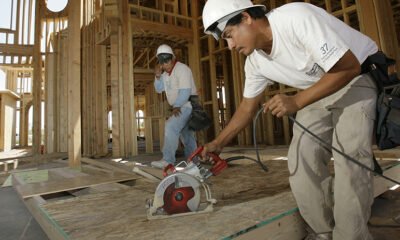border
Despite Trump’s Claims, Deportations Won’t Solve Housing Crisis

As debates continue surrounding immigration policies, experts assert that President-elect Donald Trump’s promised mass deportations will not resolve the United States’ ongoing housing crisis. Contrary to claims made during his campaign, research indicates that undocumented immigrants largely inhabit low-income rental units, rather than competing for home ownership or higher-income housing.
Immigrants often reside in multigenerational households, a trend driven by economic necessity. Riordan Frost, a senior research analyst at the Harvard Joint Center for Housing Studies, highlighted that these living arrangements are common among those unable to meet mortgage requirements. Moreover, many undocumented immigrants play a crucial role in the construction sector, suggesting that mass deportations could exacerbate the labor shortages in homebuilding.
While the housing crisis has become more pronounced, Trump has positioned immigration as a key factor driving up housing prices. At a September rally in Arizona, he stated, “Immigration is driving housing costs through the roof.” Similarly, U.S. Senator J.D. Vance echoed this sentiment during a debate, claiming illegal immigration competes with Americans for scarce housing. Experts, however, dispute this narrative, emphasizing that the relationship between immigration and housing affordability is complicated.
Indeed, Pew Research Center data reveals that just 4.8% of U.S. households include undocumented immigrants, indicating a minor overall impact on housing availability. As Frost noted, it is essential to counter the notion that housing scarcity for one group results from the presence of another. The millennial generation, particularly during the pandemic, has been the primary driver of new household formations, not immigrants.
Looking ahead, demographic changes signal a growing need for immigrant labor; the aging baby boomer generation paired with declining birth rates may lead to population loss if immigration decreases. The Congressional Budget Office projects that by 2040, net immigration will be the sole driver of population growth.
Some advocates like Edward Pinto from the American Enterprise Institute argue that deporting significant numbers of undocumented immigrants could theoretically alleviate housing demand, citing potential openings in the rental market. Yet, Pinto also acknowledges that other factors, including land costs and ineffective housing programs, contribute to the crisis.
Market reactions to proposed deportations could vary significantly. Real estate broker Jeff Lichtenstein noted that declines in rental prices in low-income areas may trigger broader impacts, potentially lowering rental and home values across various segments. Furthermore, the real estate sector heavily relies on immigrant workers; they make up a substantial portion of the construction workforce, especially in states like California, Texas, and Florida.
Deportations could lead to labor shortages, delaying critical repairs in disaster-prone regions and potentially increasing costs for property owners. Renata Castro, an immigration attorney, reinforced that the demand for construction workers remains high, yet many American citizens are unwilling to fill these roles. The ripple effects of immigration policies on the housing market illustrate a complex interplay that extends beyond the political narratives often presented.


















